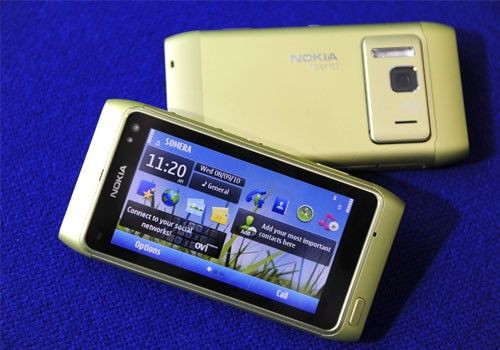Nokia's stock price could double on emerging markets exposure

Cell phone giant Nokia, which is struggling to regain market share in the United States, could find its new growth engine in the form of emerging markets and surging demand for smartphones.
Nokia has a strong foothold in emerging markets such as Middle East & Africa, Asia-Pacific, Greater China and Latin America. Emerging markets have accounted for 62 percent of the company's sales in the recently concluded third quarter.
In the third quarter, Nokia saw double digit sales growth from Latin America and Greater China at 27 percent and 14 percent respectively. In Middle East and Africa, sales fell 6 percent, while Asia Pacific sales increased 9 percent, amid industry-wide component shortage.
The Finnish company, whose market share is being grabbed by vendors such as Samsung and Apple, still holds the top spot in the overall mobile phone market with 32.4 percent market share, followed by Samsung, according to IDC.
With this global footprint and given its smartphone push, we see a scenario where profit margins could tick higher, stock analysis firm Trefis wrote in a note to clients.
Also, Nokia's market share lead could give it an edge in distribution versus peers like Samsung, which supports Google's Android OS in many of its smartphones, and other established smartphone players like RIM, Motorola and Apple. Recently, Nokia launched its flagship smartphone N8, which is competing with the likes of Apple's iPhone and Samsung's Galaxy S.
IDC expects the smartphone segment to grow 55 percent for 2010 and research from Gartner indicates every fifth phone sold last quarter was a smartphone as the device's popularity continues to skyrocket.
In the third quarter, Nokia's smartphone shipments grew 61 percent to 26.5 million units, indicating that the company is focusing more on this segment.
We believe that a large share of these smartphones is destined for emerging markets, implying potential upside potential for profit margins, Trefis said.
Trefis said: We currently estimate that emerging markets account for 53 percent of Nokia's value based on expectations of a gradual decline in emerging markets EBIT margins (a measure of profitability). However, if EBIT margins can reverse on the higher mix of smartphones and reach 20 percent by 2016, this adds +$9 to our price estimate.
Trefis added that though developed markets do not possess the same growth rates as its developing peers, these markets are experiencing the same trends toward smartphones.
In addition, as these markets carry a higher mix of post-paid subscribers, which tend to carry higher average revenue per user, is likely to boost profit margins.
Meanwhile, Nokia is revamping its Ovi services by inviting developers to create more apps that could help its smartphone segment.
Also, Nokia said it will focus on Qt as the sole application development framework to ensure that applications will continue to be compatible with the future evolution of Symbian as well as upcoming MeeGo products. Qt is a cross-platform application framework that is widely used for developing application software with graphical user interface.
The company also said it will support HTML5 for development of Web content and applications for both Symbian and MeeGo platforms. To demonstrate its commitment to the new offering, Nokia will develop its own future applications using Qt for a more consistent experience and better integration of applications and services.
With a higher smartphone mix and additional services to attract customers, this could help turn around profit margins in developed markets. If developed market EBIT margins can reach 22 percent by 2016, this adds +$3 to our price estimate, Trefis said.
The worlds' largest handset maker has been slow to adapt to the smartphone revolution in the U.S., which has been led by Apple's iPhone and Google Android devices. Ever since the iPhone was launched in 2007, Nokia has witnessed steady erosion in its smartphone market share.
The company's share price has also fallen by almost two-thirds since the iPhone was launched in 2007, wiping about 60 billion euros off the group's market capitalization. Nokia's stock price has slumped from near $40 in 2007 to around $10 recently.
Nokia's insistence on designing and selling its devices without operator input, despite the strong presence of wireless carriers like Verizon and AT&T in the U.S., has prevented it from gaining traction in the world's largest smartphone market.
Nokia, however, remains the dominant global handset vendor given its high exposure to emerging markets.
Our price estimate of $12.44 compares to a market price of around $10.50, and our estimate could nearly double to $24.50 if Nokia can improve its profit margins to 20 percent in emerging markets (+$9.00) and 22 percent in developed markets (+$3.00) by 2016, Trefis said.
ADRs of Nokia closed Thursday's regular trading session at $10.57 on the NYSE. In the past 52-weeks, the stock has touched a high of $15.89 and a low of $8.
© Copyright IBTimes 2024. All rights reserved.





















